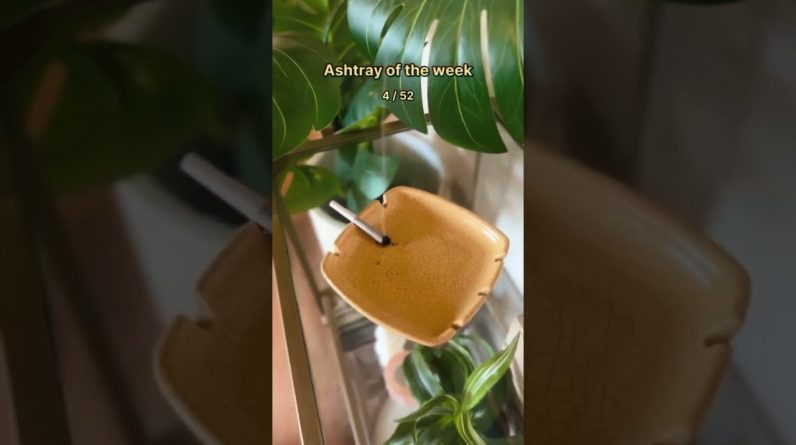
The increasing use of cannabis for both recreational and healthcare purposes means that cultivators need to up their game. In response to this high demand, the cannabis industry resorted to using synthetic extraneous growth hormones for the sake of a higher, healthier yield.
Table of Contents
These chemical growth hormones are known as plant growth regulators (PGR). The resultant cannabis that grows with the help of these PGRs is called PGR weed. On the other hand, organic cannabis growers refrain from using synthetic PGRs.
But while the use of PGRs in cannabis cultivation has benefited farmers, it poses some serious adverse health effects.
What is PGR Weed?
PGR weed refers to a cannabis plant that has been grown using one or more than one plant growth regulators (PGR). Some cannabis growers may choose to use PGR in weed plants in pursuit of a higher plant yield in a shorter amount of time. In a way, using PGR in weed is like giving steroids to the plant to make it bulkier—even unnaturally so.
The increasing use of PGR to grow bigger and denser cannabis buds is a growing concern within the cannabis community.
Firstly, using PGR isn’t the best way to achieve a healthy and thriving cannabis yield. Moreover, cannabis grown from PGR lacks the appropriate trichomes, cannabinoids, and terpenes that produce a good high. Hence, if you’ve unknowingly purchased PGR cannabis, you’ve likely been ripped off.
Secondly, and more worryingly, the (high) consumption of PGR-grown plants has been linked with severe health problems. These possible health complications include skin and eye irritation, organ damage, fertility problems, and even cancer.
Despite the obvious adversities of using synthetic PGR, cannabis growers seeking more profit continue to use them. This is why you should be able to tell apart PGR weed from natural weed.
Most Common Types of Plant Growth Regulators (PGR)
Like all complex organisms, cannabis plants produce growth hormones naturally. These growth hormones, such as auxins, gibberellins, cytokinins, abscisic acid, and ethylene, help regulate plant growth.
On the other hand, plant growth regulators are like synthetic plant hormones. In other words, they have been created in a lab using different chemicals. They’re not actual hormones, per se, but rather chemicals that modify a plant’s natural hormone production. Hence, PGRs work by promoting or inhibiting different aspects of plant growth, such as the growth rate of stems and leaves and plant cell development.
Multiple types of plant growth regulators exist, the most common being Paclobutrazol, Daminozide, and Chlormequat Chloride.
Paclobutrazol
Paclobutrazol is a plant growth regulator that inhibits the ability of a plant cell to elongate. Specifically, it inhibits the production of gibberellin (a natural hormone responsible for cell elongation and shoot development in young plants) and increases the production of cytokinins (a hormone that makes plant cells divide faster).
Since the cells are rapidly dividing but can’t elongate, the resultant flower buds are way denser.
The use of paclobutrazol in various crops helps farmers by:
- Reducing plant height to prevent lodging
- Increasing the number and weight of fruits per tree
- Improving fruit quality in terms of increasing carbohydrate content and decreasing acidity
- Reducing evapotranspiration in plants
- Developing plant resistance against biotic and abiotic stress
- Fighting against fungal diseases
However, some studies have shown that smoking cannabis buds containing paclobutrazol can negatively affect fertility and lead to liver damage. This is because, upon smoking it, paclobutrazol actually breaks down into nitrosamines, which is the most carcinogenic compound found in cigarettes.
Moreover, paclobutrazol weed obstructs the proper development of key terpenes and cannabinoids in the cannabis plant, leading to a strange-smelling, low-THC concentration bud.
Daminozide
Originally, daminozide was used as a pesticide for ornamental plants in 1963, then for food crops five years later. Cannabis growers may use this plant to slow down the growth of leaves and stems, ultimately maximizing bud yield.
Apart from its benefits as a pesticide, daminozide also helps in:
- Regulating plant growth
- Making the harvest easier
- Preventing fruits from falling off trees before ripening
However, similar to paclobutrazol, daminozide inhibits the proper development of various terpenes and cannabinoids.
Moreover, the health adversities of high exposure and consumption of daminozide soon began to surface. By 1984, the Environmental Protection Agency proposed banning its use based on concerns it being a probable human carcinogen. In 1989, a report by the Natural Resources Defense Council estimated that “The average preschooler’s exposure was estimated to result in a cancer risk 240 times greater than the cancer risk considered acceptable by E.P.A. following a full lifetime of exposure.”
By 1999, there was a complete ban on its use in consumable plants.
Chlormequat Chloride
Chlormequat chloride was the first PGR discovered in 1950. Its first-ever application was on wheat crops, producing shorter plants with thicker stems. Chlormequat chloride works by:
- Slowing plant growth in certain areas, especially the stem.
- Encouraging greater flowering
- Making the plants more uniform and therefore easier to manage and harvest
Researchers are still studying the negative impacts of chlormequat chloride on human health. There are reports of ailments such as skin and eye irritation and organ damage, as well as speculations about the PGR’s carcinogenic effects. However, there is little scientific evidence to back up these claims.

Is PGR Weed Safe for Consumption?
Owing to the recent black market weed boom, safety concerns about smoking PGR cannabis are completely valid.
Technically speaking, there is nothing wrong with the weed itself, just like there’s nothing inherently wrong with consuming unnaturally large and pulpy fruits grown using synthetic hormones and steroids.
However, the presence of synthetic plant growth regulators is a huge cause of concern. As mentioned above, PGR cannabis poses a host of potential health risks, including:
- Skin and eye irritation
- Adverse effects on male fertility
- Irreversible damage to organs
- Development of malignant and benign tumors
However, the research behind PGR weed’s negative impact on health is limited as of now. Moreover, the research that does exist considers extremely high doses of PGR consumption – a dose that you will most likely not consume in a single sitting.
Until we are able to learn more about the negative effects of smoking PGR cannabis, though, it’s better to be safe than sorry. Hence, you should stay on the safe side and be able to discern between PGR cannabis and natural cannabis, limiting yourself to the latter.
PGR Weed Vs. Natural Weed – How to Spot PGR Weed
Spotting PGR cannabis is surprisingly easy. Its appearance, texture, taste, smell, and even the resultant high are notably different from natural cannabis. Here are some telltale signs that your weed has been grown using plant growth regulators:
- Appearance: PGR weed is more dense and bulky than its natural counterpart. While buds from natural cannabis tend to look more sparse, PGR weed resembles a neatly-shaped nugget.
- Smell: PGR weed reeks of chemicals, whereas natural weed has more of a flowery or grassy smell.
- Texture: PGR weed feels dense and spongy, almost as if it’s full of a liquid. In fact, if you squeeze PGR weed, it can sometimes start oozing liquid. On the other hand, natural weed is crumbly and completely dry, and you can easily break it apart.
- Taste: Most PGR weed has an overwhelming chemical taste, and the bitterness can linger in your throat for hours. Natural weed, while also bitter, doesn’t have that lingering chemical essence.
- Effect: the mental and physical high of PGR weed is worlds apart from natural weed. The “high” you feel from PGR weed is partly due to smoking the chemicals, which can leave you light-headed, dizzy, nauseous, and lethargic.
Keep in mind, though, that any of these factors alone don’t mean that the weed has plant growth regulators in it. For example, natural weed can sometimes also be a little spongy or nugget-shaped.
However, a combination of most of these factors is a pretty good hint that the weed has some PGR in it.
Frequently Asked Questions
Here are the answers to some of the most frequently asked questions about PGR weed.
Why do weed growers use PGR weed?
The use of PGRs in cannabis cultivation helps regulate or control the growth of the plant. Most of these regulators work as a plant growth retardant to limit the growth of stems and leaves and instead encourage flowering.
Are natural PGRs safe?
Apart from synthetic PGRs, some weed cultivators may choose to use natural plant growth regulators. For example, chitosan or kelp achieves the same impressive results as their synthetic counterparts without posing the same health and environmental risks.
What are the long-term effects of smoking PGR weed?
The health hazards of smoking PGR cannabis do not manifest immediately. Instead, the long-term use of PGR cannabis leads to some serious health risks later on in your life. This includes permanent damage to your organ and even problems in fertility.

Closing with PGR Cannabis
The increasing use of synthetic PGRs in the cannabis industry is a growing cause of concern. While research is limited, there are confirmed links between prolonged human consumption of PGR cannabis and health adversities such as organ failure, irritation to the skin and eyes, infertility, and even cancer.
Plus, the high is considerably less effective and usually leads to nausea and fatigue.
Hence, you should always check the quality and origin of your weed, lest you accidentally consume toxic chemicals.





